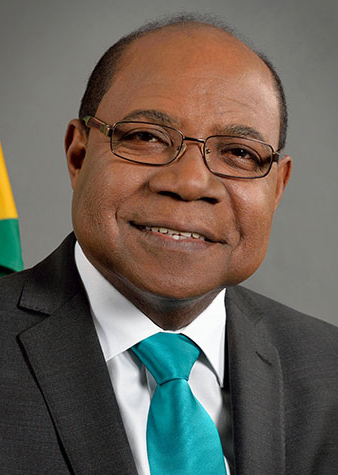For all the country’s internal challenges linked mostly to domestic crime and the negative international press associated with the phenomenon, Jamaica continues to be one of CARICOM territories of choice for international tourists and successive political administrations in Kingston, the country’s capital continue to back its tourism industry as one of the main bulwarks of the country’s economy.
With tourist numbers last year topping four million visitors and spending estimated at US$3.3 billion, Jamaica’s Tourism Minister Edmund Bartlett is sufficiently confident that the sector is on track to do better this year to have announced at his review, a week ago, of the sector’s mid-season performance that he would be engaging in a series of meetings with local bankers in order to persuade them that the sector is deserving of their backing in terms of credit.
A measure of Jamaica’s high international rating insofar as Caribbean destinations of choice are concerned is to be seen in the staggering 900,000 stopover visitors it received between January 1 and February 27 this year, which numbers, according to a recent Jamaica Gleaner Report says do not include cruise ship visitors. Overall stopover numbers for this year so far are up 14 per cent year over year while average spending per room was reportedly pegged at a five-year high with room rates of US$500 to US$800 per night being the current norm.

Other glowing statistics also continue to adorn reporting on Jamaica’s tourism sector including employment growth whichAdd New was reportedly up by 19,000 jobs last year, increasing overall direct employment in the sector to 120,000, a figure that does not include attractions and cruise lines.
Jamaica, Bartlett projected, was on track to exceed last year’s performance when tourist visits totalled 4.13 million and spending was estimated at US$3.3 billion.
For the current season, Bartlett said arrivals were up in all categories, but mostly from North America. Other segments that saw an increase were Latin America, Europe, Caribbean visitors and the Jamaican diaspora.
The average spend per room was at a five-year high, Bartlett added, while noting that room rates of US$500 to US$800 per night were currently the norm.
On the basis of the available evidence the Jamaican government, it seems, is determined to push the envelope even further with regard to its backing of the country’s tourism industry. Bartlett, who says that the sector can add even more value than it currently does to the country’s economy once it secures the requisite investment support is quoted in The Gleaner of Sunday March 3 as saying that “bankers are being challenged to understand that the place to look for investment is tourism.” The Tourism Ministry itself is prepared to lead the way, the Gleaner says, having transferred funds from its Tourism Enhancement Fund to the country’s EXIM Bank to facilitate lending to entrepreneurs at 4.5 per cent interest rate. Another $100 million, is due to be added to an existing credit line of $100 million for the transport sector, “where members might need to refresh vehicles for aesthetic and security reasons,” the Gleaner adds.
While the sector is evolving, Bartlett disclosed that government is currently being asked to review two new plans for hotels, “one for downtown Kingston and another for Freeport in Montego Bay.”





